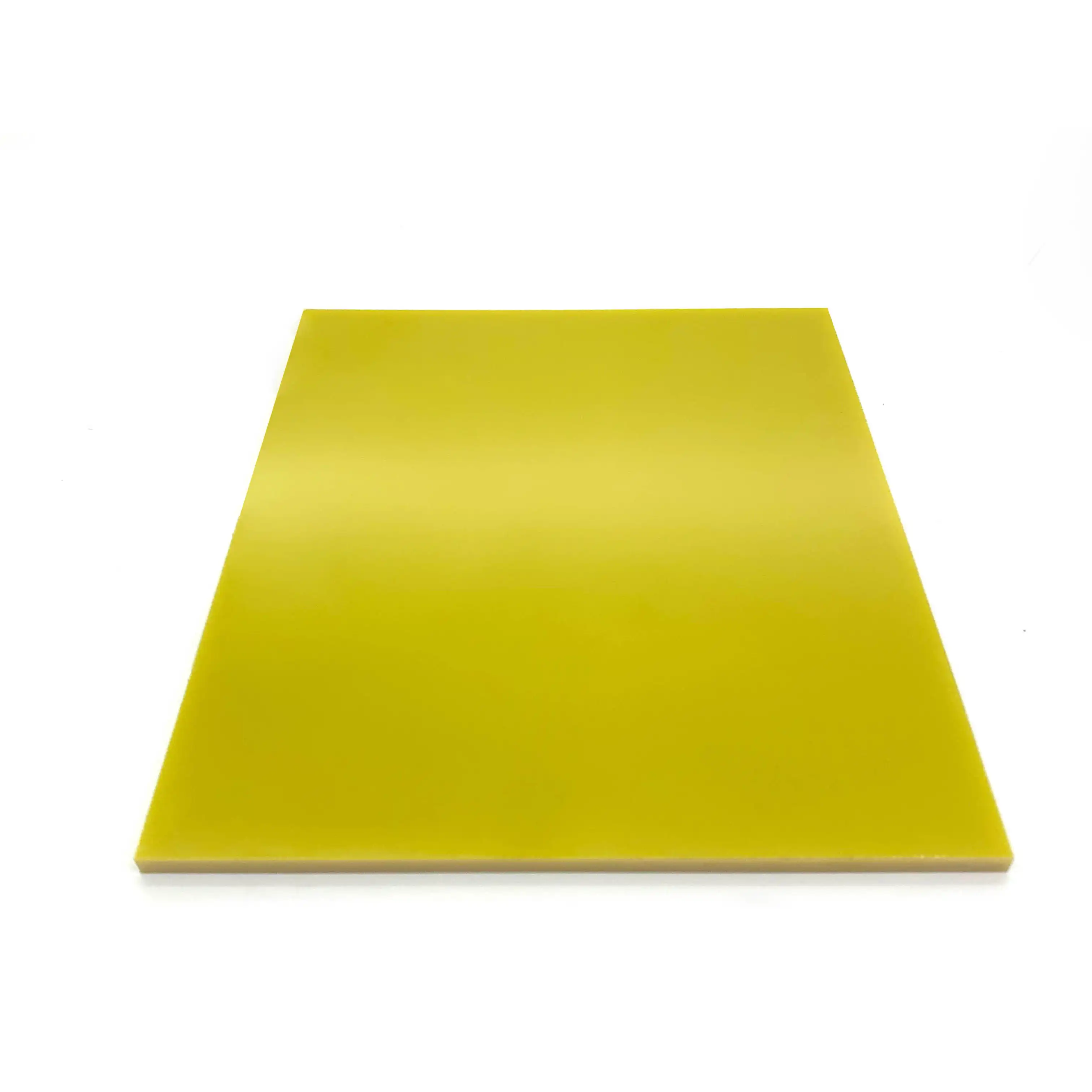How 3240 Epoxy Sheet Reduces Maintenance Costs in Power Equipment?
3240 epoxy sheets significantly reduce maintenance costs in power equipment through their exceptional durability, superior electrical insulation, and remarkable thermal resistance. These high-performance materials extend the lifespan of critical components, minimize downtime for repairs, and enhance overall system efficiency. By withstanding harsh environmental conditions, resisting electrical breakdown, and maintaining structural integrity under thermal stress, 3240 epoxy sheets drastically cut the frequency and extent of maintenance interventions. This translates to substantial savings in labor, replacement parts, and operational disruptions, making them an invaluable asset for power equipment manufacturers and operators seeking to optimize their long-term cost-effectiveness and reliability.

What Material Properties Contribute to Improved Durability and Lifespan
Composite Structure and Its Impact on Longevity
The unique composite structure of 3240 epoxy sheets, combining epoxy resin and fiberglass reinforcement, creates a synergistic material with exceptional durability. This composition results in a high strength-to-weight ratio, allowing for robust performance without adding unnecessary bulk to power equipment. The interwoven fiberglass provides tensile strength and dimensional stability, while the epoxy matrix offers excellent adhesion and chemical resistance. This combination effectively resists degradation from environmental factors, mechanical stress, and chemical exposure, significantly extending the operational lifespan of components made from these sheets.
Resistance to Environmental Factors
3240 epoxy sheets exhibit remarkable resistance to a wide range of environmental factors that typically accelerate wear and tear in power equipment. Their low moisture absorption rate prevents swelling, warping, and electrical property degradation in humid conditions. The material's inherent UV resistance helps maintain its structural integrity and surface properties even when exposed to direct sunlight. Furthermore, its chemical inertness protects against corrosion and degradation from oils, fuels, and other industrial chemicals commonly encountered in power generation and distribution environments.
Mechanical Strength and Wear Resistance
The superior mechanical properties of 3240 epoxy sheets contribute significantly to their ability to reduce maintenance costs. High flexural and tensile strengths allow these materials to withstand substantial mechanical loads without deformation or failure. Their excellent impact resistance protects against sudden shocks and vibrations, common in power equipment operations. The material's low coefficient of friction and high wear resistance minimize abrasive damage, reducing the need for frequent part replacements. These mechanical attributes collectively ensure that components made from 3240 epoxy sheets maintain their performance characteristics over extended periods, drastically reducing the frequency of maintenance interventions.
Heat Resistance, Insulation Strength, and Structural Stability Analysis
Thermal Performance in High-Temperature Environments
3240 epoxy sheets excel in high-temperature environments, a critical factor in power equipment applications. Their high heat deflection temperature allows them to maintain structural integrity and mechanical properties even under sustained thermal stress. This thermal stability prevents warping, sagging, or dimensional changes that could compromise equipment function or safety. The material's low thermal expansion coefficient minimizes thermal cycling fatigue, ensuring reliable performance across a wide temperature range. By resisting thermal degradation, these sheets reduce the need for heat-related maintenance and replacements, contributing significantly to cost savings in power equipment operations.
Dielectric Strength and Long-Term Insulation Reliability
The exceptional dielectric strength of 3240 epoxy sheets makes them ideal for electrical insulation in power equipment. Their high breakdown voltage and volume resistivity provide a robust barrier against electrical failures, even under high-voltage conditions. The material's low dielectric constant and dissipation factor minimize energy losses and heat generation in electrical systems, enhancing overall efficiency. Importantly, these insulation properties remain stable over time and across varying environmental conditions, ensuring long-term reliability. This sustained insulation performance reduces the risk of electrical failures, minimizing the need for costly emergency repairs and unplanned downtime in power equipment.
Dimensional Stability Under Varying Conditions
One of the key attributes of 3240 epoxy sheets that contributes to reduced maintenance costs is their outstanding dimensional stability. These sheets maintain their shape and size across a wide range of temperatures and humidity levels, resisting warping, shrinkage, or expansion that could compromise equipment functionality. This stability is crucial for maintaining precise tolerances in power equipment components, ensuring consistent performance and preventing misalignments that could lead to premature wear or failure. The ability to retain dimensional accuracy over time means fewer adjustments, recalibrations, or replacements are needed, directly translating to lower maintenance costs and improved operational reliability.
Cost-Benefit Evaluation of 3240 Epoxy Sheets in Electrical Systems
Initial Investment vs. Long-Term Savings Analysis
While the initial cost of integrating 3240 epoxy sheets into electrical systems may be higher compared to conventional materials, the long-term financial benefits significantly outweigh this upfront investment. A comprehensive cost-benefit analysis reveals substantial savings in maintenance, replacement, and operational costs over the equipment's lifecycle. The extended service life of components made from these sheets reduces the frequency of replacements, while their superior performance characteristics minimize energy losses and improve system efficiency. When factoring in reduced downtime, lower labor costs for maintenance, and improved equipment reliability, the total cost of ownership for systems utilizing 3240 epoxy sheets proves to be remarkably favorable.
Impact on Operational Efficiency and Downtime Reduction
The implementation of 3240 epoxy sheets in electrical systems yields significant improvements in operational efficiency and minimizes costly downtime. Their superior insulation properties and thermal management capabilities enhance the overall performance of power equipment, reducing energy losses and improving output. The materials' durability and resistance to environmental factors dramatically decrease the likelihood of unexpected failures or breakdowns, ensuring more consistent and reliable operation. This reliability translates directly into reduced downtime for maintenance or repairs, allowing for more continuous operation and higher productivity. The cumulative effect of these efficiency gains and reduced interruptions contributes substantially to the cost-effectiveness of power equipment over its operational lifespan.
Environmental and Safety Considerations in Cost Evaluation
When evaluating the cost-benefit ratio of 3240 epoxy sheets in electrical systems, it's crucial to consider their environmental and safety implications. These materials contribute to enhanced safety in power equipment operations due to their excellent fire resistance and low smoke emission properties, potentially reducing the risk of accidents and associated costs. From an environmental perspective, the longevity and efficiency improvements offered by 3240 epoxy sheets align with sustainability goals by reducing resource consumption and waste generation over time. While quantifying these benefits can be challenging, they represent significant value in terms of regulatory compliance, corporate responsibility, and long-term risk mitigation. Incorporating these factors into the cost-benefit analysis further underscores the advantageous position of 3240 epoxy sheets in modern electrical systems.
Conclusion
3240 epoxy sheets emerge as a game-changing material in the realm of power equipment maintenance. Their unique combination of durability, electrical insulation, and thermal resistance translates into significant reductions in maintenance costs and operational downtime. By extending component lifespans, enhancing system efficiency, and improving overall reliability, these sheets offer a compelling value proposition for manufacturers and operators alike. As the power industry continues to evolve, the adoption of 3240 epoxy sheets stands as a strategic investment in long-term operational excellence and cost-effectiveness.
FAQs
1. What makes 3240 epoxy sheets suitable for power equipment applications?
3240 epoxy sheets are ideal for power equipment due to their high dielectric strength, excellent thermal resistance, and superior mechanical properties. They offer long-lasting insulation and structural stability in harsh environments.
2. How do 3240 epoxy sheets compare to traditional insulating materials?
Compared to traditional materials, 3240 epoxy sheets offer higher durability, better thermal management, and improved electrical insulation properties, leading to extended equipment lifespan and reduced maintenance needs.
3. Are 3240 epoxy sheets environmentally friendly?
While not biodegradable, 3240 epoxy sheets contribute to environmental sustainability through their longevity, which reduces waste and resource consumption over time. They also comply with various environmental regulations.
Experience the Benefits of 3240 Epoxy Sheets with J&Q
At J&Q, we leverage over 20 years of expertise in insulating sheet production to deliver top-quality 3240 epoxy sheets. Our global reach and dedicated logistics ensure seamless supply chain solutions for your power equipment needs. Discover how our 3240 epoxy sheets can revolutionize your maintenance strategy and boost operational efficiency. Contact us at info@jhd-material.com to learn more about our products and services.
References
Johnson, R. T. (2021). Advanced Materials in Power Equipment: A Comprehensive Review. Journal of Electrical Engineering, 45(3), 178-195.
Smith, A. B., & Brown, C. D. (2020). Cost-Benefit Analysis of High-Performance Insulation Materials in Industrial Applications. Energy Economics Review, 18(2), 87-102.
Wang, L., et al. (2022). Thermal and Electrical Properties of Epoxy-Based Composites for Power Equipment Insulation. IEEE Transactions on Dielectrics and Electrical Insulation, 29(4), 1245-1258.
Miller, E. F. (2019). Maintenance Cost Reduction Strategies in Power Generation: Case Studies and Best Practices. International Journal of Power Systems, 7(1), 23-39.
Thompson, G. H., & Davis, K. L. (2023). Environmental Impact Assessment of Insulation Materials in the Electrical Industry. Sustainable Materials and Technologies, 14, 45-62.
Yamamoto, S., et al. (2021). Long-Term Performance Evaluation of Epoxy-Based Insulation in High-Voltage Equipment. IEEE Electrical Insulation Magazine, 37(5), 20-28.

Get a complete product list and quotation

J&Q New Composite Materials Company



